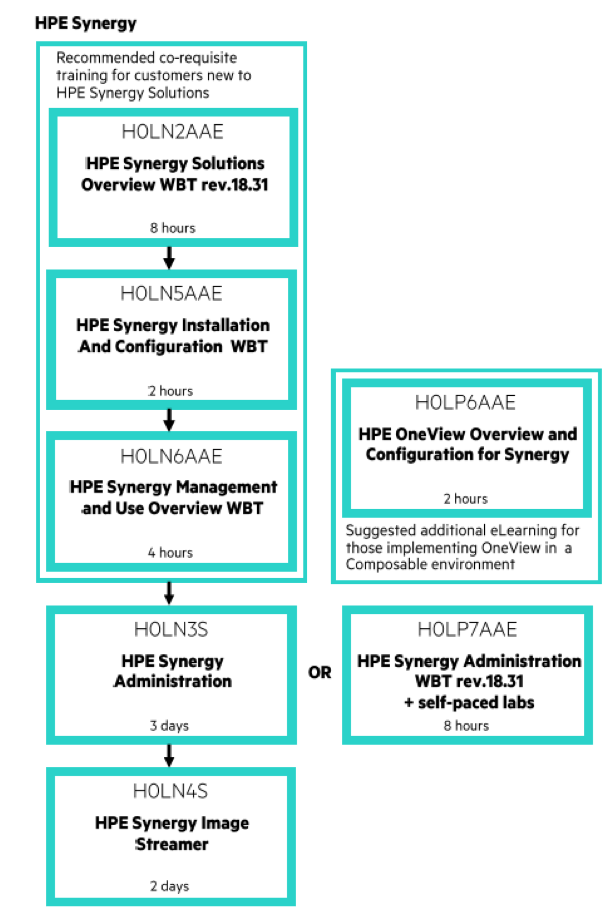What exactly are the benefits of moving to automated infrastructure provisioning for your company? What does this mean for your future business model? How will you provide new IT and business services over the next 1-2 years? What does this mean for IT teams and each individual?
Composable Infrastructure messaging is typically focused on simplifying tasks and removing IT challenges.
Challenges including:
-
- Spending countless hours on infrastructure requests and manual tasks
- Staffed with IT administrators lacking specialized skillsets
- Less time for innovation hinders business performance
- Frustrated lines of business resulting in lower productivity due to lag time
- Rigid, slow, and costly operations with a manual process
But how many times have you been on the phone to a call centre, renewing your home or car insurance, booking a holiday, or talking to a utility provider, when you hear the phrase “sorry, the computer isn’t doing as it’s told, I thought these things were supposed to make life easier”. Or something very similar.
How many times have you bought a new piece of technology based on a promise in the advertising, but failed to find out where that option in the menu is. How successful was your last move to a new mobile phone handset? Sometimes, you’ll ask the assistant in the phone shop to help you with the upgrade, they’ll make it look easy. That’s because they were trained to do it, they practised it in a test environment in case they got it wrong, and they repeat it regularly until it becomes second nature.
So, why do some IT organisations move their infrastructure onto a new platform and assume the rules that worked with the old “handset” are still suitable. The truth is, like every new thing, it won’t be just like the old thing that it will replace, or you wouldn’t have replaced it. It will take time to learn how it does things, most importantly how it does things differently. Do you really want to do that on a live production system, or have an opportunity to practice in a test environment with someone who has the necessary skills already?
Moving to a composable infrastructure solution with HPE Synergy will include steps that might only need to be completed once. A good example of this would be the initial implementation. Is it worth learning how to complete the initial set up, or should you use HPE Pointnext Install and Start-up Services? We’re back to the person in the phone shop again, and whether you feel confident enough to complete the task alone.
When the installation team are walking across the car park to their cars, will you be at the window watching them go, or will you be at the admin screen starting the journey to composability? Again it’s all about confidence. That confidence could come from a number of sources, but the one that 80% of IT managers cite as a critical success factor in new projects is TRAINING.
HPE Education Services recognise it’s about making changes to the skillset and the mindset that will lead to a successful technology refresh, which is why Management of Change and Technical Training are inseparable. We recognise that people learn in different ways, not just by reading the manual. We recognise that there are many steps on the journey to composability and companies need to free up resources from day-to-day maintenance tasks and allow them to push the company towards innovation.
For technical training, the option to attend a five day class in a local city, with all the associated time away from the office, travel and accommodation costs is less compelling these days. The impact to the business alone may be a reason for mangers to question the alternatives; read the manual or scan the internet for documents and videos. But HPE Education Services have better alternatives, developed, tried and tested over 40 years of experience.
-
- Digital Learner Framework content packs, a full curriculum of training as a yearly subscription. Self-paced training, consumed at the availability and pace of the student, not just theory, but hands-on practical exercises on live equipment.
- Subscriptions can also offer access to curated collections of service briefs and white papers, short demonstration videos termed microlessons to revisit tasks, extended lab activities, and update webinars
- Self-paced pre-requisite courses, reducing the duration of instructor-led training (ILT) and time away from the day job. This ensures that scheduled ILT sessions are biased towards practical exercises.
- Virtual Instructor-Led Training using our award winning collaboration tool HPE MyRoom and our vLab remote labs enables us to bring fully hands-on technical training to your desktop.
Considering the options for technical training, we should first refer to the curriculum path and decide what the current skill level of the learner is before deciding where the start point is. For someone new to HPE Synergy, maybe even new to HPE technologies, let’s start at the very beginning, it’s a very good place to start. But for a learner with some experience of composability, this may not be necessary, it’s a personal choice, maybe guided by experienced HPE Education Services pursuit leads.

Initially, self-paced training is the most convenient way of attaining the pre-requisite knowledge on the HPE Synergy solution. Start by studying the various configurations available, reviewing the infrastructure, hardware and software installation considerations. It’s also useful to understand the installation requirements, identify components and cabling within a Synergy frame. You should also consider Synergy fabric management, how to access the system and of course using HPE OneView to configure and manage.
Hands-on lab exercises are an integral part of instructor-led training, whether face-to-face, or virtually delivered. But there is also the option to extend the same exercises into a self-paced delivery alongside eLearning.
In summary, large IT transformations, like moving to composable infrastructure or introducing DevOps, fundamentally change the way people work. A transformation to Agile can cause huge disruptions to an IT organization. Adoption of new technologies and processes, changes to job roles and the way people collaborate put significant challenges on IT organizations.
To make any large-scale IT transformation a success, leaders need to embark on this journey with their teams early from the project start onwards. People have be ready, willing and able to develop from concerned employees to engaged employees to make automated infrastructure provisioning work.
If you want to enable new ways of working together across company silos and empower teams of experts to work across departments, you need to plan time for your people to practise these new ways of working.
A transformation to composable infrastructure requires leadership, top-class expertise of your best innovators, clear and timely communication, transparency of work and visibility of successes and lessons learnt.
HPE’s Management of Change Framework provides methods and tools to lead organization through these changes.
https://education.hpe.com/ww/en/training/consulting.html
Let’s talk about your people. Click here to talk to one of our experts.
For more information on Management of Change services, read our brochure:



